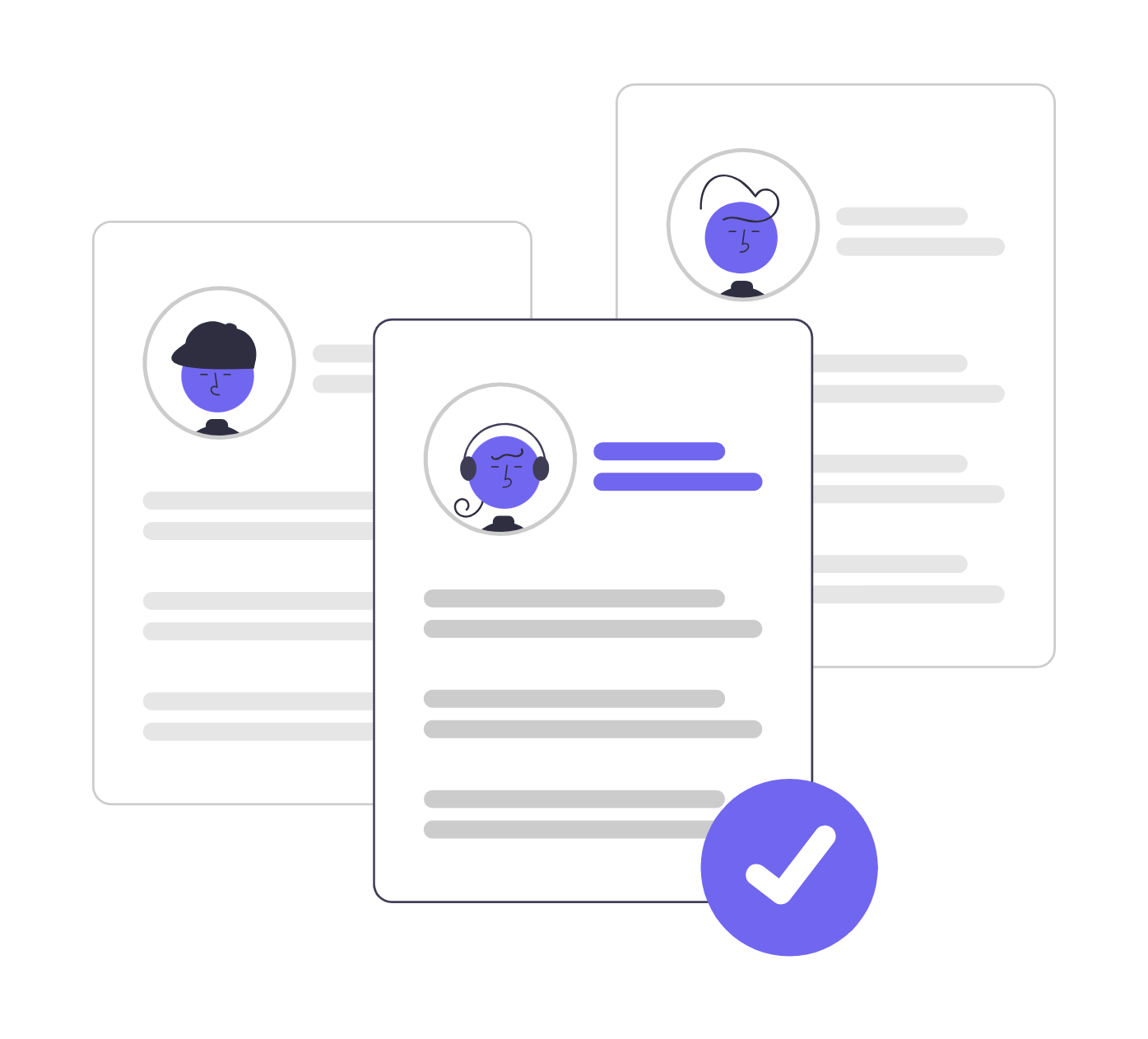Share
Introduction: Why Most Hiring Fails Before It Even Starts
Too many hiring processes fall apart before they even begin—not because there’s a shortage of candidates, but because there’s no clarity about what’s actually needed. Vague hiring goals. Unclear roles. Misaligned budgets. These aren’t recruiter problems—they’re strategic gaps that start at the very top.
Enter the job requisition.
While often treated as routine paperwork, a job requisition is one of the most important documents in the entire recruitment lifecycle. It’s the bridge between business needs and hiring action. And when done right, it lays the foundation for smarter, faster, and more strategic hiring.
This guide will walk you through what a job requisition is, what it includes, how it fits into the broader recruitment process, and how to get it right—so your hiring efforts deliver real results.
What Is a Job Requisition? (And Why It Matters More Than You Think)
A job requisition is a formal, internal request to create or fill a role within an organization. Typically submitted by a manager and approved by HR and finance, it details the why, what, and how behind the hiring need—before any job ad goes live or interviews begin.
It’s important to distinguish job requisitions from similar-sounding terms:
- Job Requisition: Internal document requesting approval to hire
- Job Description: Internal document describing duties, responsibilities, and qualifications
- Job Posting: External-facing ad meant to attract applicants
In essence, the requisition kicks off the hiring process. It justifies the role, outlines the resources required, and secures organizational alignment before recruitment begins.
Example:
If a marketing manager realizes their team is overwhelmed, they don’t just post a job ad. They fill out a requisition explaining the need (increased workload), the type of role needed (e.g., a content specialist), the budget, and the timeline—then route it for approvals.
Easily administer one-click skill tests with workscreen. -This way you can Assess candidates based on real-world ability—not just credentials like résumés and past experience. This helps you hire more confidently and holistically.

What Should a Job Requisition Include? (The Essential Ingredients)
A solid requisition includes more than just the job title and start date. At a minimum, it should contain:
- Job Title: Clear and aligned with the company’s job architecture
- Department and Hiring Manager: Identifies reporting structure and functional area
- Requisition Reason: Growth, backfill, parental leave, etc.
- Employment Type: Full-time, part-time, contract, temporary
- Duration: Permanent or fixed-term (with end date)
- Location: On-site, remote, or hybrid (with specifics)
- Start Date: Preferred start window
- Salary Range and Benefits: For budget alignment
- Required Qualifications: Education, experience, certifications
- Preferred Qualifications: Nice-to-haves that enhance fit
- Budget Status: Is funding available or pending approval?
Including quantitative expectations—like “reduce customer onboarding time by 15%”—makes a requisition even stronger.
The Job Requisition Process: Step-by-Step Breakdown
The process may vary slightly by company size, but generally follows these steps:
1. Identifying the Need
The department lead or manager spots a staffing gap—due to workload, turnover, or expansion.
2. Drafting the Requisition
The manager fills out the job requisition form, often with input from the team or cross-functional partners.
3. Submitting for Review
HR or talent acquisition reviews the form for completeness, compliance, and alignment with headcount planning.
4. Approvals
The requisition may go through several layers of approval:
- Department Head
- Finance (budget check)
- Executive Leadership (for high-impact or sensitive roles)
5. Job Intake
Once approved, HR schedules a kickoff/intake meeting to develop the job description and strategy.
6. Job Posting and Hiring
The job is posted internally and externally, and the recruitment process begins.
Quickly identify your most promising candidates. WorkScreen automatically evaluates, scores, and ranks applicants on a performance-based leaderboard—making it easy to spot top talent, save time, and make smarter, data-driven hiring decisions.

Common Hiring Problems Job Requisitions Help You Avoid
Skipping or rushing the requisition stage leads to chaos. A well-defined requisition helps eliminate:
- Unstructured Hiring: Avoids ad hoc decisions based on gut feel
- Budget Overruns: Prevents unapproved, expensive hires
- Poor Candidate Fit: Clarifies role scope, reducing mismatches
- Slow Hiring: Streamlined approvals lead to faster execution
- Compliance Risks: Keeps documentation clean and defensible
- Accountability Gaps: Ensures hiring is tied to business needs
- Wasted Resources: Aligns hiring with actual team priorities
In short, requisitions turn hiring from reactive fire-fighting into strategic workforce planning.
How to Write a Great Job Requisition (That Actually Gets Approved)
Writing a job requisition isn’t just an HR chore—it’s a business case for headcount. Here’s how to make it count:
- Understand the Talent Gap
- What’s the business impact of not hiring?
- What skills are missing today?
- Collect Stakeholder Input
- Talk to team members, cross-functional peers, and leadership
- Align on how this hire supports broader priorities
- Use Metrics to Make Your Case
- Show that workloads have increased 25%
- Estimate ROI of the new hire: reduced errors, faster delivery, higher output
- Outline a Realistic Plan
- Include a timeline, onboarding considerations, and risks of delay
- Write with Clarity and Confidence
- Avoid buzzwords—be precise
- Focus on outcomes, not just tasks.
Eliminate low-effort applicants—including those who use AI Tools to apply, copy-paste answers, or rely on "one-click apply." This way, you focus only on genuine, committed, and high-quality candidates—helping you avoid costly hiring mistakes.

Best Practices to Streamline Your Job Requisition Process
To make requisitions faster and more effective, apply these operational tips:
- Use a Standardized Template: Keeps info consistent across teams
- Train Managers: Help them articulate business value, not just tasks
- Set SLA Timelines: Create time-bound stages for each approval step
- Centralize Documentation: Store all requisitions in a shared system
- Review Quarterly: Gather feedback and refine the process over time
- Use Tech Wisely: Automate form routing, reminders, and notifications
- Keep Communication Open: HR, finance, and hiring managers should be in sync throughout.
Why Job Requisitions Are the Ultimate Strategic Hiring Tool
Most people think the hiring process starts when you post a job. But smart teams know it starts much earlier—with the requisition.
Here’s what you gain by treating job requisitions as a strategic asset:
- Proactive Hiring: Plan ahead instead of scrambling
- Cost Control: Tie headcount to actual budgets
- Team Alignment: Everyone knows why you’re hiring
- Faster Hiring: Clear roles = better targeting = less back-and-forth
- Better Hires: You’re not just filling a seat—you’re filling a gap.
Conclusion: Want to Hire Smarter? Start with the Requisition
If you want faster hires, better candidates, and fewer misfires, don’t skip the fundamentals. A well-crafted job requisition might not feel flashy—but it’s the quiet force that ensures everything else in the hiring process runs smoothly.
It’s the difference between just “getting someone in the door” and hiring the right person at the right time, for the right reason.
So the next time your team says “we need to hire,” start with this question:
Have we written the right requisition yet?
FAQ
A requisition is a formal internal request to obtain approval for a need—such as hiring a new employee or purchasing equipment. It outlines the justification, cost, and purpose of the request.
A PO (Purchase Order), on the other hand, is a binding document issued after a requisition is approved. It authorizes the actual purchase or transaction with a vendor or supplier.
In hiring:
- A job requisition requests approval to hire.
- A PO might be used later to pay for recruitment services, software licenses, or third-party hiring tools related to that hire.
A requisitioner is typically the individual who initiates and submits a requisition form—whether it’s for hiring, purchasing, or resource allocation. In the hiring context, the requisitioner is often the hiring manager or department head who identifies the need for a new role.
Key responsibilities may include:
- Identifying staffing needs
- Drafting and submitting job requisitions
- Collaborating with HR and finance to secure approvals
- Participating in intake meetings and recruitment planning
- Ensuring that hiring aligns with team goals and budget constraints
Approval workflows vary by organization, but typically include:
- Department Manager or Team Lead (initial requester)
- HR or Talent Acquisition (to validate headcount and process alignment)
- Finance or Budgeting Team (to approve salary and cost implications)
- Executive Leadership (for high-level or strategic roles)
Yes. A requisition may be denied if:
- Budget is not available
- The role isn’t strategically aligned
- Duplicate roles already exist
- The justification lacks clarity or urgency
In such cases, feedback is often provided so the requisitioner can revise and resubmit.

